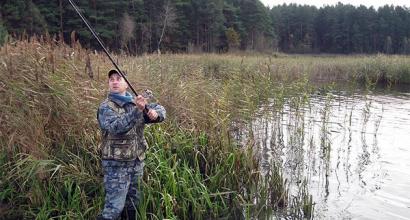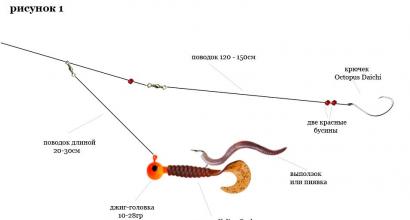Winter fishing for perch on a lure and a balancer
The balancer works great on an active perch
Perch is becoming the most popular object of hunting for winter fishermen. You can catch a striped robber in almost any body of water throughout the entire period of ice fishing. For fishing, you can use different gear. This:
- float rod
- mormuscular tackle with a nod
- sheer fishing rod
- baits or rods for fishing for fry or live bait
Purposefully hunting for large and medium perch is easiest with a lure or balancer. Of course, sailors will also be present in the catch, but the percentage of small fish will be significantly lower than when fishing with mormyshka.
For effective fishing, it is important to collect sensitive tackle, pick up catchy baits, find a promising hole and master the simple technique of sheer lure.
Lure fishing tackle
A winter lure rod traditionally has a handle and a larger size compared to a jigsaw rod.
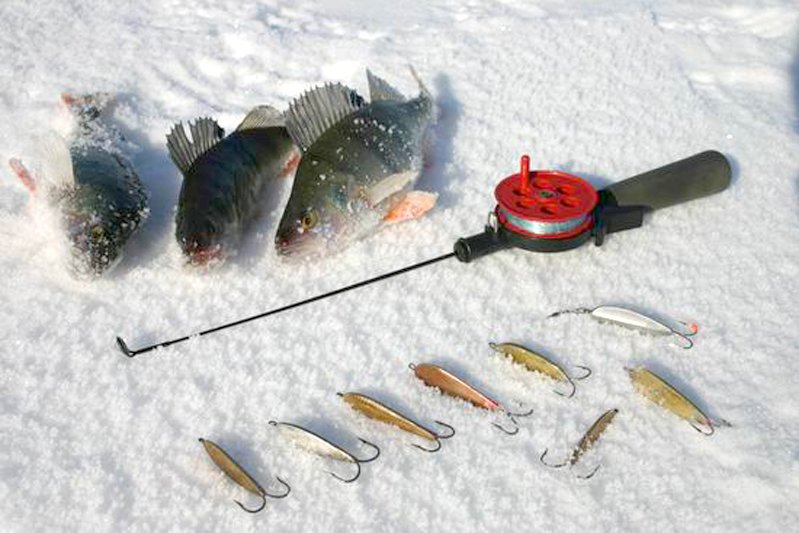
Before you start picking up a fishing rod for sheer lure, you need to determine in which reservoirs and what kind of fish you will have to catch. It is one thing when the capture of a perch weighing 300 g will be considered a huge success. But if “humpbacks” of about 1 kg are often found in a pond, then it will be possible to cope with such fish with the help of strong and reliable tackle.
A novice angler can advise the following layout of the fishing rod.
- The rod will fit with a neoprene or cork handle with a total length of 30-35 cm. It is desirable to have a coil with a diameter of about 50 mm. When choosing a fishing rod, you should pay attention to the stiffness of the whip and the ease of rotation of the reel. It is preferable to use a whip of medium hardness, and the reel should be free to move without jamming. Stiffer whips can be used when using balancers.
- About 50 m of fishing line 0.12-0.18 mm thick should be wound on the reel. The optimal diameter will be 0.14-0.15 mm. Due to the fact that perch fishing is carried out at shallow depths, the line should effectively absorb the jerks of large fish, and if necessary, the reel should play off part of the line. In order not to be left with a broken tackle at a crucial moment, at the beginning of each ice fishing season, you need to reel in fresh fishing line.
rigging
The nod of a winter fishing rod for fishing on a balancer is quite elastic, slightly softer than the tip of a spinning rod
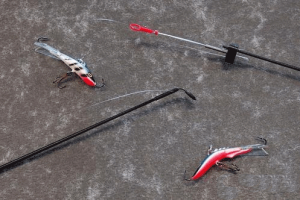
With a sheer lure of a perch, fine-tuning the operation of the bait and nod will be an important point. If the rod is equipped with an end ring (tulip), it will be problematic to install a nod. But it is enough to heat the tulip evenly in the flame of a lighter so that the ring can easily be removed from the tip of the whip. Now you need to pick up a nod that is combined with the mass of the bait.
Perch spinners and balancers often vary considerably in both size and weight. Therefore, the entire arsenal of lures in the angler's box should be divided into groups by weight. Then it will be easier to pick up a working nod for each group. It is best to equip 2-3 fishing rods with nods of different stiffness. Then it will be possible to simply change the spinner or balancer for a bait of the same weight.
Nods are made from different materials, among which may be:
- rubber nipple tube
- clockwork spring
- coil spring
- lavsan plate
- silicone tube
The main requirement for a nod is that when loaded, it must deviate from the horizontal line by 20-30 degrees. The working length of the nod should be approximately 5-6 cm. In order to prevent overlapping with the protruding parts of the nod, the mount should be streamlined, and the protruding part of the nod at the back of the mount should not be more than 1-2 cm.
Catchable spinners
Traditional artificial lures for ice fishing are vertical spinners. The best results are shown by models made by the skillful hands of anglers. However, shop baits can be catchy. The spinner is good because it can be modified with your own hands and improve its quality.
For perch fishing, vertical spinners 3-5 cm long are used. The hook (single) can be rigidly soldered into the body of the bait, or the tee is mounted in a movable way through one or more winding rings.
All spinners can be divided into two groups:
- planning decoys
- "carnations"
It is better to use planning-type spinners on first ice in clean areas of the reservoir.
Narrow vertical baits called “carnations” work well during the “wilderness” period, as well as in the windows of algae and snag.
For angling perch at a shallow depth of up to 3 m, you can successfully use the Lucky John and Salmo models. They work especially well among algae at a depth of 1.5 m.
Catching balancers
Perch balancers Kuusamo 50
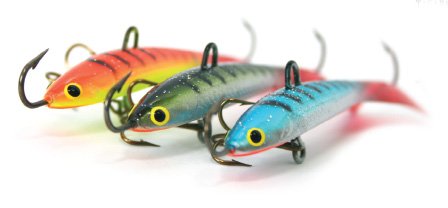
Balancers appeared among Russian fishermen relatively recently, but they have already managed to please with their catchability. On some reservoirs, they are significantly superior to vertical spinners. In addition, often the size of a perch caught on a balancer exceeds the size of a “minke whale” that has pecked at a lure.
Balancers are available in two types:
- with soft wool ponytail
- with plastic tail
The most common models with a rigid tail. The perch size of the balancer will be 30-35 mm long. Occasionally, bites of a large “humpback” are observed on baits 50 mm long.
Among the most catchy balancers are models from Rapala with a length of 30 mm and Kuusamo with a size of 50 mm. At shallow depths, it is better to use small balancers, and in pits and channel edges, preference should be given to large models.
Pike on a lure is a tactic for catching a toothy predator in winter with artificial lures.
Location selection
Success in perch fishing in winter largely depends on the right place. In order to find a cool hole, you often have to drill dozens of holes in a thick ice shell. If on the first ice it is easier to find perch near the shore, then later the fish hides in the depths, in snags, on dumps. It should be noted that, once on a flock, you can successfully fish. But sometimes, after 2-3 perches caught, the biting subsides. This hole needs to be sprinkled with snow, and then return to it after a while.
The output of perch can be for an hour in some part of the reservoir. For example, fish actively begin to feed at noon near a flooded bush. You can make a hole at any point near the bush, and the striped predator will be regularly caught. But already an hour after the zhora, you won’t be able to see a single bite here. And even during the next fishing trips, such a bite in this place can never be expected.
Lure fishing technique and balancer
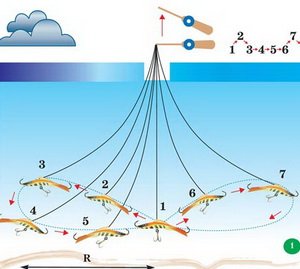
The technique of sheer glittering from ice is quite simple. The bait sinks to the bottom, and sharp short strokes are made with the rod. After each tossing of the spinner, a pause is made. For planning spinners and balancers, it is 3-5 s, and for “carnations”, a stop of 1-3 s is enough. The game of the bait is carried out by the carpal movement of the hand, the amplitude of movement is in the range of 20-40 cm.
Often, when biting from the bottom, it is useful to put the lure directly on the ground during a pause. At this point, you can move the bait a little to entice the perch to bite.
When using a balancer, the game is played with smoother movements. The pause time is selected depending on the model. To determine the duration of the balancer, just look into the hole. After swinging the rod, you need to note the time it takes until the bait stops completely under the hole.
Perch do not always hunt near the bottom. Therefore, by winding the line on the reel, you can find the horizon where the fish hunts. Sometimes a striped predator rises to the very hole, so you need to check the entire vertical, starting from the bottom and ending with a layer of water directly under the ice.
Despite the seeming simplicity of perch sheer flashing, not every angler manages to master this method of fishing. Someone did not try hard enough when picking a fishing rod, and someone is too lazy to drill numerous holes. As a result, only the most scrupulous and persistent anglers will catch the catch.

